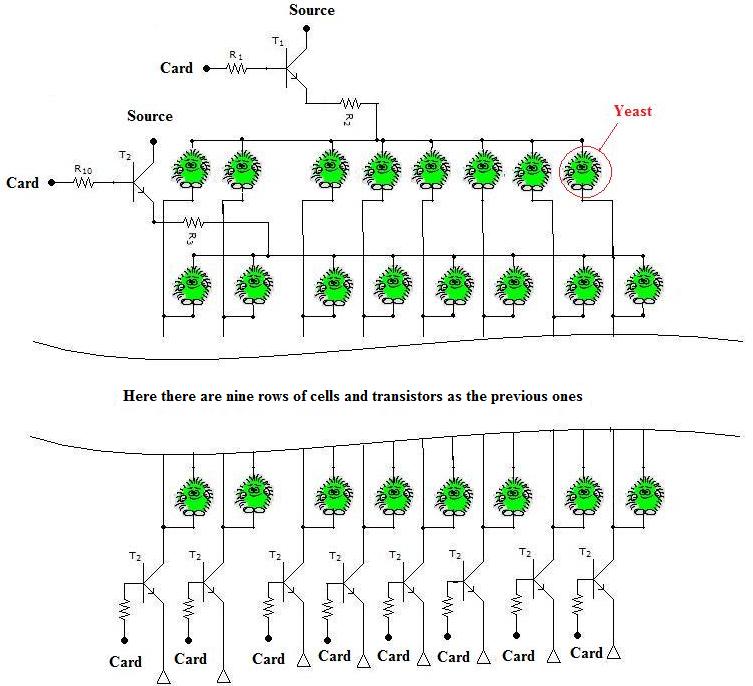Team:Valencia/Hardware/iLCD
From 2009.igem.org
| Line 2: | Line 2: | ||
{{Template:Valencia09iGEM23}} | {{Template:Valencia09iGEM23}} | ||
<br> | <br> | ||
| - | <div align="justify" style="position:relative; top:-5px; left:70px; width:700px"> | + | <div align="justify" style="position:relative; top:-5px; left:70px; width:700px; color:black; font-size:10pt; font-family: Verdana"> |
=='''iLCD: LEC array'''== | =='''iLCD: LEC array'''== | ||
Revision as of 17:24, 20 October 2009
iLCD: LEC array
Having established that yeast responds with light to electrical pulses, that is having build a Light Emitting Cell or LEC, we considered to control an array of 96 totally independent pixels, so we could create animated pictures and it would be the first screen that works with living cells.
To do this we had two problems, to control each pixel independently and build a stand with 96 pairs of electrodes (one for each pixel) to stimulate the yeast.
1) Controlling 96 pixels.
Our screen is a matrix of 8 columns by 12 rows. Thus, we can decide which row and column we want to activate at all times through a card with 20 digital outputs, one per row and column. For example, to turn the cell in position 3,4 of the screen, activate the outputs corresponding to row 3 and column 4. The card is controlled by a program executed in LabVIEW.
2) Constructing the support.
We have developed a system capable of selectively controlling the input of amplitude- and time-varying electrical pulses to a 24 channel-wide [http://sine.ni.com/nips/cds/view/p/lang/en/nid/201630 data acquisition card]. These pulses are the signal for the coordinated switch on and off of an array of pixels (let them be Diodes, LEDs, or Cells, LECs). The system is capable of reproducing different black and white images that will be transmitted to the pixel resulting in animated pictures.
In order to design and build this device a LabVIEW program has been implemented to divide each desired image (jpg file) in 96 parts. Depending on the colour intensity of each part, our program sends simultaneously through the data acquisition card (connected to a laptop through USB) a voltage signal that permits the activation of the corresponding pixels.
- iLCD recipe
Material you will need in order to build your own iLCD:
- a laptop
- a data acquisition card
- our LabView program
- images you want to animate
- Light Emitting Cells (LECs)
 "
"
